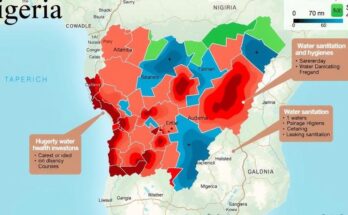Dr. David Gikungu of the Kenya Meteorological Department noted that the high temperatures in Kenya are typical before the long rains, which are expected to start next week. While warmer-than-average temperatures are anticipated, some regions may see below-average rainfall during the March-April-May season.
According to Dr. David Gikungu, Director of the Kenya Meteorological Department, the high temperatures currently affecting Kenya are typical prior to the arrival of the long rains. The regions, particularly the Highlands East of the Rift Valley such as Nairobi and Kiambu, have recorded maximum temperatures reaching 32°C, while other areas have exceeded 36°C.
During a recent interview on KBC, Dr. Gikungu stated that rainfall is expected to start next week, particularly in Nairobi. He indicated, “This season that we are looking to begin in mid-March is always preceded by very high temperatures.”
He elaborated on the relationship between temperature and solar positioning, explaining that rising temperatures are attributed to the sun’s movement towards the equator. This phenomenon generates significant heating and low pressure, which draws winds that, upon passing over ocean masses, produce clouds and rain. As a result, this weather pattern will lead to cooler temperatures.
Last week, the Kenya Meteorological Department officially announced the commencement of the March-April-May long rains season scheduled to begin next week. Their Seasonal Weather Forecast for this period indicates that warmer-than-average temperatures are anticipated across the nation, especially in coastal and northern regions.
Although specific temperature predictions for locations like Nairobi, Kisumu, Nakuru, Mombasa, and Kiambu are absent, it is projected that the Highlands East of the Rift Valley, including Nairobi County, will experience near-to-below-average rainfall. Likewise, the coastal region, including Mombasa, is expected to receive similar rainfall patterns, with the heaviest precipitation expected in May.
In summary, the Kenya Meteorological Department has indicated that the current high temperatures, which have been experienced since December, are a natural precursor to the upcoming long rainy season. Rainfall is expected to commence next week, albeit with variable precipitation levels across different regions. Despite the expected warming, forecasts suggest that some areas will experience below-average rainfall during this important agricultural season.
Original Source: www.kenyans.co.ke




